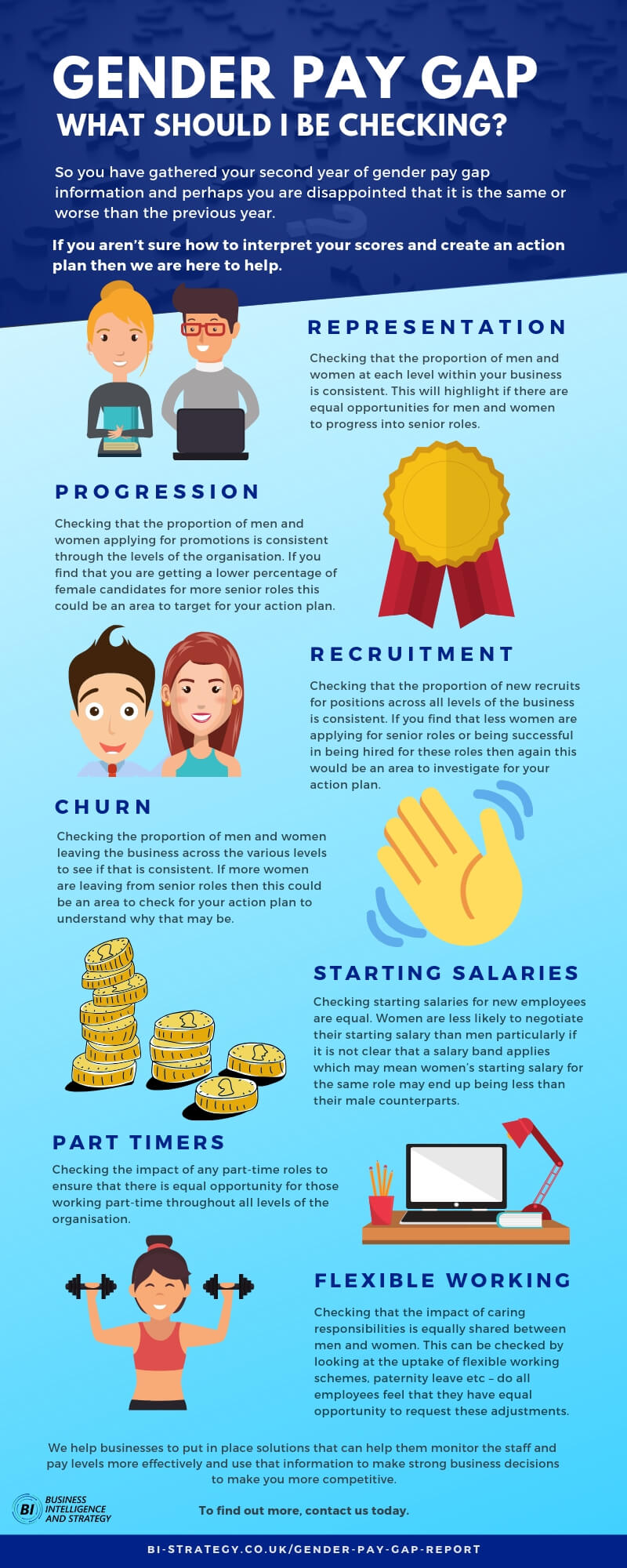Closing the gender pay gap is no easy feat. Have you gathered your second year of gender gap information and are disappointed that it is the same or even worse than the previous year?
You are not alone, as most other businesses will also find themselves in this same situation.
What can be done? How does a business even start trying to close the gender pay gap?
Closing the Gender Pay Gap – how?
How do businesses close the gap? Data. It all comes down to data and we’re not just saying that because data is what we do.
Businesses who want to do something about the gap need to interpret the information and scores from the reports and create a realistic action plan.
If you aren’t sure how to interpret and create a plan, then we are here to help.
Interpreting the data
On the government website they have a really helpful guide on how to interpret your results. The guide is thorough and goes into detail – which is great. However, we thought it would be helpful to offer a quick, brief summary of the guide:
Representation – Checking that the proportion of men and women at each level within your business is consistent. This will highlight if there are equal opportunities for men and women to progress into senior roles.
Progression – Checking that the proportion of men and women applying for promotions is consistent through the levels of the organisation. If you find that you are getting a lower percentage of female candidates for more senior roles this could be an area to target for your action plan.
Recruitment – Checking that the proportion of new recruits for positions across all levels of the business is consistent. If you find that less women are applying for senior roles or being successful in being hired for these roles then again this would be an area to investigate for your action plan.
Churn – Checking the proportion of men and women leaving the business across the various levels to see if that is consistent. If more women are leaving from senior roles then this could be an area to check for your action plan to understand why that may be.
Starting salaries – Checking starting salaries for new employees are equal. Women are less likely to negotiate their starting salary than men particularly if it is not clear that a salary band applies which may mean women’s starting salary for the same role may end up being less than their male counterparts.
Part-timers – Checking the impact of any part-time roles to ensure that there is equal opportunity for those working part-time throughout all levels of the organisation.
Flexible working – Checking that the impact of caring responsibilities is equally shared between men and women. This can be checked by looking at the uptake of flexible working schemes, paternity leave etc – do all employees feel that they have equal opportunity to request these adjustments.
To make it even easier to digest, we have put together an infographic:

Why equal pay is important
Equal pay is the right thing to do as every employee deserves a fair salary and this should be motivation enough to close the gender pay gap. Saying this, it is worth mentioning the advantages when doing the right thing:
- Confidence in diversity – addressing barriers to women’s representation at senior management level gives organisations confidence that the most skilled and talented individuals are the ones making the decisions.
- Transparent pay structures – it’s easier for businesses to maintain and derive human resource management information from transparent pay structures.
- Mitigate financial and reputational risks – keeping an eye on pay structures can help mitigate risks of unhappy employees bringing up equal pay cases.
- Avoid legal action – being proactive with gender pay gap issues can help businesses avoid being sued by an employee who is underpaid because of their gender.
- Avoid embarrassing PR – gender pay gap is a hot topic at the moment, a business facing a lawsuit because of equal pay can result in a PR nightmare.
- Attract and retain talent – fighting pay gaps shows that a company cares about its employees. Good people are attracted and want to work for good companies.
- Culture of trust – being open and committing to equal pay with help develop and establish a culture of trust within the business. Employees and potential customers will see your business in a good light.
Keep on top of reporting
Whilst the reporting requirements are only required on an annual basis, to ensure that you are keeping on top of your figures as people join, leave and progress through your organisation it is key to have smart tools and reports that will help you both report on historic information but also plan for the future.
We help businesses to put in place solutions that can help them monitor the staff and pay levels more effectively and use that information to make strong business decisions to make you more competitive.
To find out more contact us today.
If you found this article interesting, you may be interested in our previous posts, ‘who has to report gender pay gap‘ and ‘gender pay gap challenges‘.







